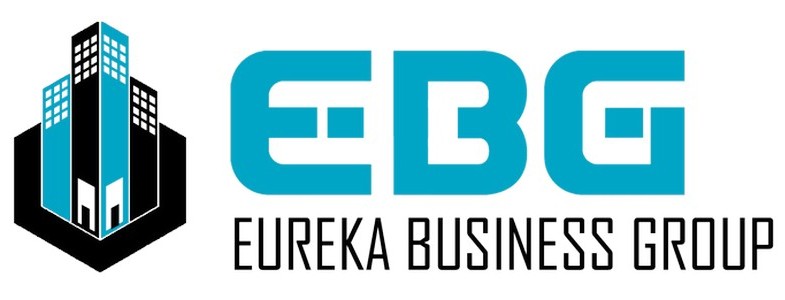- Home
- Commercial Broker Services
- Business Broker Services
- Business Owners Resources
- Smooth Moves: Streamlining Your Journey to the Perfect Retail Lease
Smooth Moves: Streamlining Your Journey to the Perfect Retail Lease
Securing the perfect retail lease is akin to laying a strong foundation for your business. It’s the critical first step in transforming your entrepreneurial vision into a thriving reality. The process, however, can be daunting. From selecting the right location to negotiating terms, each decision impacts your long-term success. To help you navigate this journey smoothly, we’ve broken down the essential steps and considerations. Here’s your guide to streamlining your journey to the perfect retail lease.
Understanding Your Business Needs
Before diving into the search for a retail space, it’s crucial to have a clear understanding of your business needs. Consider the following questions:
- What type of retail business are you running?
- What is your target customer demographic?
- How much space do you need?
- What is your budget for rent?
These questions will help you determine the most suitable locations and space requirements for your retail store. A clear business plan not only simplifies your search but also strengthens your position when negotiating lease terms.
Choosing the Right Location
Location is everything in retail. A prime location can drive foot traffic and significantly boost sales, while a poor location can stifle growth. Here are key factors to consider:
Foot Traffic
High foot traffic areas, such as busy shopping districts or popular malls, can attract more potential customers. Observe the foot traffic at different times of the day and week to ensure consistent flow.
Accessibility
Your store should be easily accessible to your target customers. Consider proximity to public transportation, parking facilities, and major roads.
Demographics
Analyze the demographics of the area to ensure they align with your target market. Factors such as age, income level, and lifestyle can influence your store’s success.
Competition
Evaluate the presence of competitors in the area. While some competition can indicate a healthy market, too much can be detrimental. Conversely, complementary businesses nearby can create a retail synergy, attracting more customers to the area.
Budgeting and Financial Planning
Financial planning is a critical aspect of leasing a retail space. Beyond the monthly rent, there are several costs to consider:
Base Rent
The base rent is the fixed amount you’ll pay monthly or annually. Ensure it fits within your budget while allowing room for other operational expenses.
Additional Costs
Be aware of additional costs such as:
- Common Area Maintenance (CAM) Fees: Charges for maintaining shared spaces in a shopping center or mall.
- Property Taxes: Some leases require tenants to pay a portion of property taxes.
- Utilities: Costs for electricity, water, and other services.
Lease Duration
Determine a lease duration that offers flexibility and aligns with your business goals. While longer leases might offer better terms, shorter leases provide more flexibility to adapt to changing circumstances.
Negotiating the Lease
Negotiation is a critical step in securing favorable lease terms. Here are strategies to enhance your negotiating power:
Hire a Broker
Consider hiring a commercial real estate broker. Their expertise and market knowledge can help you find the best deals and navigate complex lease terms.
Understand Lease Types
Familiarize yourself with different lease types:
- Gross Lease: The landlord covers most expenses, including property taxes, insurance, and maintenance.
- Net Lease: The tenant pays a portion of these expenses in addition to the base rent.
- Percentage Lease: The tenant pays a base rent plus a percentage of sales revenue.
Key Negotiation Points
Focus on negotiating:
- Rent Increases: Aim for minimal or fixed rent increases over the lease term.
- Tenant Improvements: Negotiate for the landlord to cover or share the cost of renovations.
- Escape Clauses: Include clauses that allow you to terminate the lease under specific conditions, such as poor sales performance or major disruptions.
Legal Considerations
Reviewing the lease agreement thoroughly is essential to avoid potential pitfalls. Here are key legal considerations:
Lease Agreement Terms
Understand all terms and conditions outlined in the lease. Pay attention to:
- Renewal Options: Conditions under which you can renew the lease.
- Subleasing: Your rights to sublease the space if needed.
- Maintenance Responsibilities: Clarification on who is responsible for maintenance and repairs.
Legal Assistance
Consider hiring a real estate attorney to review the lease agreement. They can identify unfavorable terms and ensure your rights are protected.
Preparing for Move-In
Once the lease is signed, it’s time to prepare for the move-in. Here’s how to ensure a smooth transition:
Design and Layout
Plan your store layout to maximize space and create an inviting shopping experience. Consider:
- Customer Flow: Design pathways that encourage customers to explore your store.
- Product Placement: Strategically place high-margin items in prominent locations.
- Aesthetics: Choose a design that reflects your brand identity.
Permits and Licenses
Ensure you have all necessary permits and licenses before opening. This may include business licenses, health permits, and occupancy certificates.
Marketing and Promotion
Create a buzz around your store opening. Use social media, local advertising, and special promotions to attract customers from day one.
Monitoring and Adapting
After settling into your new space, continuous monitoring and adaptation are crucial for long-term success:
Performance Analysis
Regularly analyze sales data, customer feedback, and market trends. Use this information to make informed decisions about inventory, marketing strategies, and store layout.
Flexibility
Remain flexible and willing to adapt to changing circumstances. The retail landscape is dynamic, and being able to pivot quickly can give you a competitive edge.
Building Relationships
Maintain a good relationship with your landlord. Open communication can help resolve issues promptly and foster a positive leasing experience.
Conclusion
Securing the perfect retail lease is a multifaceted process that requires careful planning, negotiation, and adaptation. By understanding your business needs, choosing the right location, budgeting effectively, negotiating favorable terms, and preparing thoroughly, you can set a strong foundation for your retail success. Remember, the journey doesn’t end once the lease is signed. Continual monitoring and flexibility are key to thriving in the ever-evolving retail landscape. With these steps, you’ll be well on your way to smooth moves and a successful retail venture.



